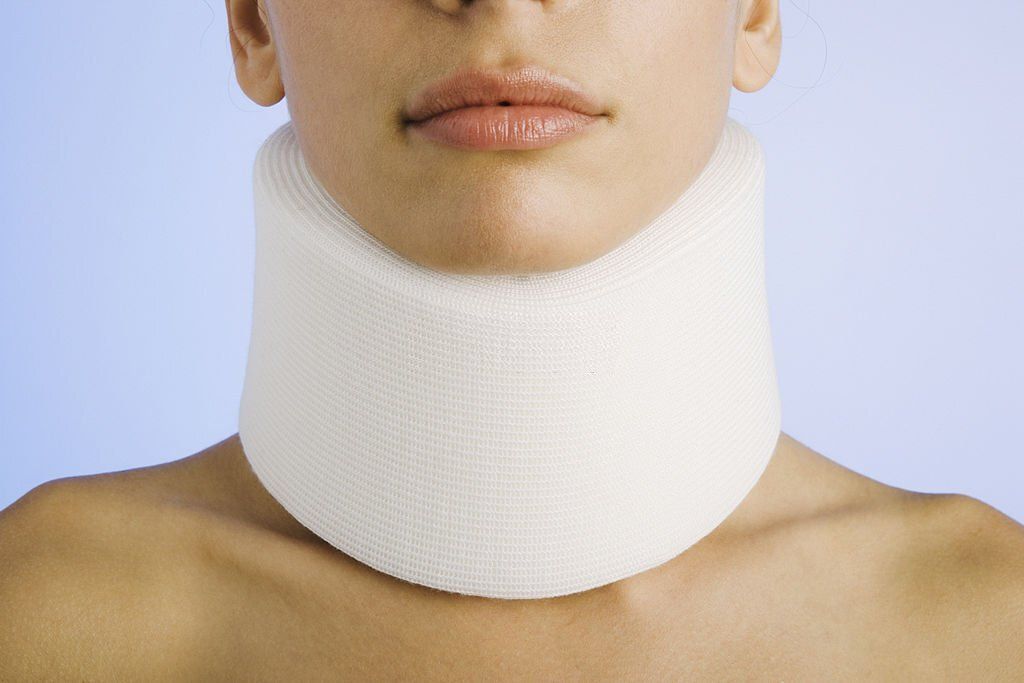This article is reviewed, corrected, and approved by: Dr. Benjamin McLean M.D. | FCPS | FRCP | MPH
Did you ever feel pain or stiffness in your neck or upper back after looking at your phone or computer for hours? It’s a common thing called turtle neck syndrome, nerd neck, or text neck, and it's caused by poor posture.
Spending too much time looking down puts strain on our neck and back muscles, which can cause discomfort and stiffness. So next time you're using your phone or computer, try to keep your head up and your shoulders relaxed to avoid this issue.
What Is Turtle Neck Syndrome?
Extended periods of time spent looking down at digital devices can lead to a condition known as Turtle neck Syndrome. This condition can cause discomfort in the neck and upper back, with symptoms such as stiffness, inflammation, and pain.
Turtleneck Syndrome Symptoms
The symptoms of turtle neck syndrome can vary from person to person, but they may include the following:
- Pain and stiffness in the upper back and neck area.
- Headaches
- Difficulty turning the head
- The arms or hands become numb or tingly
- Muscle weakness
- Fatigue
- Limited movement and tingling in the cervical region
- Strained neck muscles
- Forward head posture
If you encounter any of these signs, it is important to see a doctor or physical therapist for diagnosis and treatment. With proper treatment, most people with turtle neck syndrome or nerd neck can make a full recovery.
Causes Of Turtle Neck Syndrome

The main cause of turtle neck syndrome is poor posture. When you look down at a phone or computer, you are putting extra strain on the muscles in your neck and upper back. It is possible for this to result in discomfort, inflexibility, and various other indications.
Other potential causes of turtle neck syndrome include:
Weak neck muscles
When neck muscles are weak, they may not be able to adequately support the weight of the head. This can result in discomfort and stiffness.
Neck injuries
A neck injury, such as a whiplash injury, can damage the muscles and ligaments in the neck. This damage can lead to excruciating discomfort and severely limited mobility.
Repetitive movements
If you spend a lot of time typing or playing video games, you might notice your neck getting sore or stiff. That's because those repetitive motions can really strain your neck muscles.
Stress
Stress can also contribute to severe turtle neck syndrome by tightening the muscles in the neck and upper back.
Age
As people get older, the muscles in their neck tend to become weaker, increasing their vulnerability to experiencing discomfort and stiffness.
Who Is At Risk For Turtleneck Syndrome?
Turtle neck syndrome can affect anyone, even children to older, but some people are at higher risk. These include:
- People who spend a lot of time looking at screens, such as smartphones, computers, and tablets.
- People who have poor posture.
- People who have weak neck muscles.
- Individuals with a history of neck injuries.
- Obese or overweight individuals.
- Those who smoke.
- Pregnant women.
- The ones looking for an alternative to neck liposuction.
Prevention of Turtle Neck Syndrome

We understand that devices such as computers and mobile phones have become an essential part of our daily lives and cannot be ignored or discarded. However, excessive or using more than your need, as well as addiction, can have negative consequences.
It is essential to be aware of our usage and to strive for balance, incorporating physical activity for optimal health and well-being. Here are some things you can do to help prevent turtle neck syndrome:
- Keep your screen at eye level.
- Take breaks from looking at screens every 20-30 minutes.
- Stretches your neck and back throughout the day
- Strengthen your neck muscles with exercises.
- Manage stress levels.
- Non-surgical neck lift option. To know more about neck lift before and after, read this article: Neck Lift Before and After: A New Look For A Younger You
If you're having any of these symptoms, it's essential to seek medical attention or consult a physical therapist for diagnosis and treatment. With appropriate care, the majority of individuals suffering from turtle neck syndrome can fully recuperate.
Conclusion
Turtleneck syndrome, or nerd neck, is a painful reminder of how prolonged screen time and poor posture can harm our bodies. Take breaks after some time from screens, try to walk for a few minutes, and stretch your neck muscles.
By taking care of yourself and staying motivated, you can overcome the problem of poor posture that many people face in a fast-advanced world. By doing so, you will maintain good posture and prevent future problems.
Frequently Asked Questions (FAQs)
Q: Why does my neck lean forward?
Ans: If you spend a lot of time using digital devices, you may experience neck pain and neck lean forward issues. This can be due to various reasons, such as weak neck muscles, degenerative disc disease, arthritis, or trauma.
Q: How to cure turtleneck syndrome at home?
Ans: To combat forward head posture (aka "text neck"), focus on awareness, ergonomics, stretching and strengthening exercises, taking frequent breaks, and consulting a physical therapist if needed.
Q: What are the main causes of turtleneck syndrome?
Ans: Causes of this issue include muscle imbalances, screen usage, weak core muscles, poor desk ergonomics, carrying heavy bags, lack of physical activity, injury or trauma, and aging.
Symptoms of Turtleneck Syndrome:
- Pain and stiffness in the upper back and neck area.
- Headaches.
- Difficulty turning the head.
- Numbness or tingling in the arms or hands.
- Muscle weakness.
- Fatigue.
- Limited movement and tingling in the cervical region.
- Strained neck muscles.
- Forward head posture.
Causes of Turtleneck Syndrome:
- Poor posture: Looking down at devices puts extra strain on neck and upper back muscles.
- Weak neck muscles: Inadequate support for the weight of the head can lead to discomfort and stiffness.
- Neck injuries: Damage to muscles and ligaments from injuries can cause severe discomfort and limited mobility.
- Repetitive movements: Prolonged typing or gaming can strain neck muscles.
- Stress: Tightening of neck and upper back muscles due to stress.
- Age: Weakening of neck muscles as people get older.
Who Is at Risk:
- Turtleneck syndrome can affect anyone, but those at higher risk include:
- People who spend a lot of time looking at screens.
- Individuals with poor posture.
- Those with weak neck muscles.
- People with a history of neck injuries.
- Obese or overweight individuals.
- Smokers.
- Pregnant women.
Preventing Turtleneck Syndrome:
- Keep screens at eye level.
- Take breaks from screens every 20-30 minutes.
- Stretch your neck and back regularly.
- Strengthen neck muscles with exercises.
- Manage stress levels.
- Consider non-surgical neck lift options.


